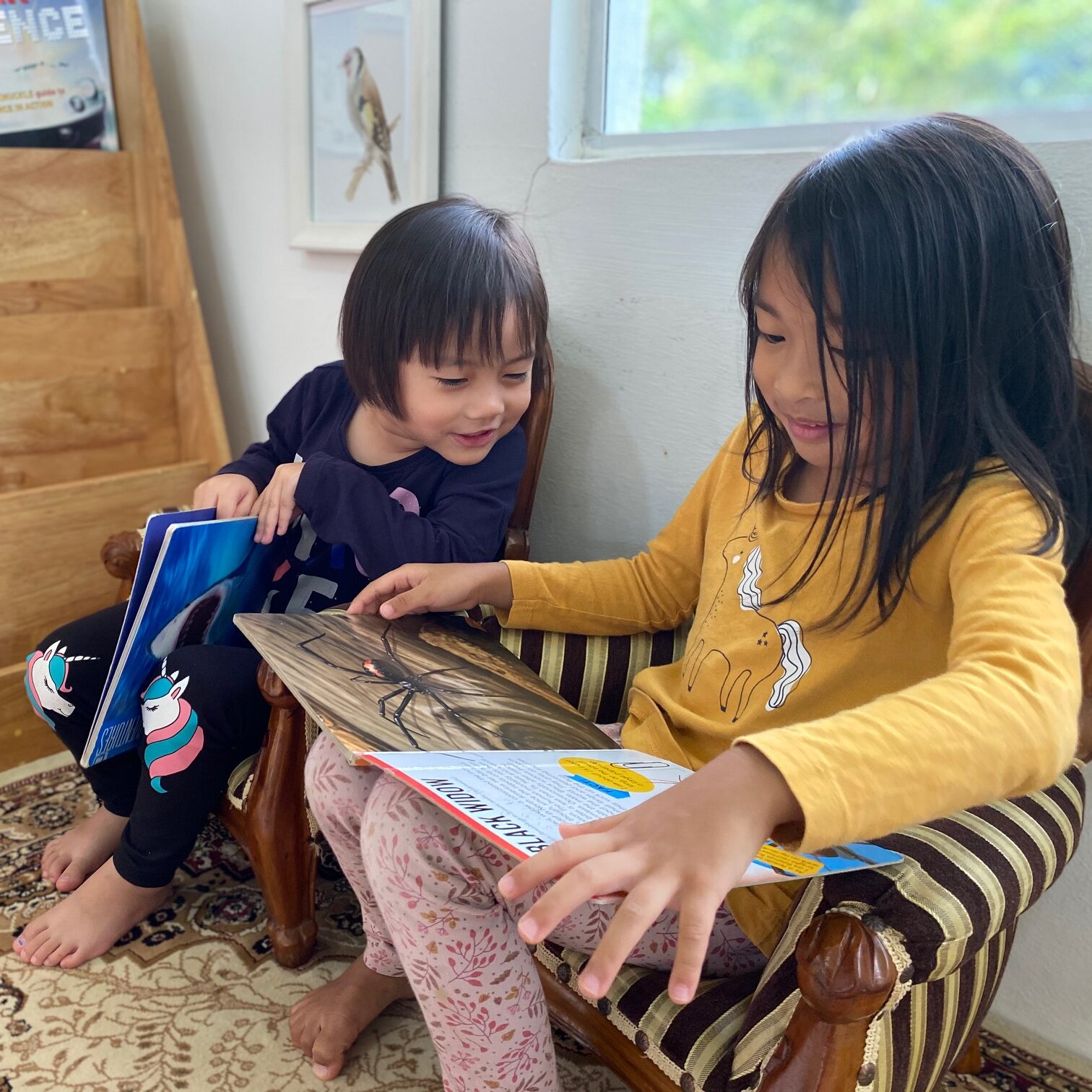Reading to your children regularly provides so many benefits and opportunities that will be an asset to them for the rest of their lives. Here are some of my top tips for getting started and forming a beautiful life-long love of reading.
1- Start reading to your child from birth (or pregnancy!)
It’s really important to start reading as early as possible. Babies can even hear in the womb – if you read during pregnancy, your newborn may be able to recognize the books you’ve read.
When your child is born, make it a daily habit to read to your child and observe their focus & response. Allow them to fully absorb the details on the page, turn the pages only when they turn away or signal they are ready for another page. Reading daily will make it something your child comes to expect each day.
2. Provide a language-rich environment for your child.
Books are a fantastic way of providing children with a very rich immersive experience of language. Choose quality books with rich, expressive vocabulary. Make sure the grammar is correct.
When you speak to your child, speak like you would speak to an adult. Avoid simplifying your words and using “baby language” don’t underestimate your child’s ability to fully absorb the vocabulary you use and the books you read – the more varied and well spoken your language is, the better your child’s language will be in the future.
3. Model a love of reading.
Show your child that you love books and you have a deep connection to them. Let your children witness your excitement to read books, find and shop for books. Show your child how much you enjoy reading and watch them copy you.
4. Choose the right books.
Choosing the right books is crucial when working on forming a love for reading. Choose high-quality books with rich language. Children below the age of 6 often enjoy books based on real-life scenarios and experiences they may encounter, this is a great way of helping them understand how the world works. Books with relatable characters can help them feel connected and represented. Realistic & beautiful images will captivate their imagination and senses, and provide lots of opportunities to expand on their language.
Elementary stage children often find fascination in books related to history and culture as they become more curious about the world and how humans have lived throughout time.
5. Take the pressure away.
Let reading time be a fun, child-led time to explore books leisurely without the formal pressure of “learning”. Reading shouldn’t be “lesson time”. Allowing their love for reading to blossom naturally at their own pace.
6. Teach your child to read when they show the readiness and interest.
The right time to learn how to read is different for every child, this means it is crucial for the parent to observe the child closely so that they may identify signs of readiness in their child.
When children are ready to learn to read, you may find them pointing out letters or words, asking what words say, pretending that they can read and showing eagerness to learn. When the child is ready, support them by facilitating the correct environment, providing them with the right books and encouraging them gently.
Teaching your child to read too early or too late will make it an undesirable stressful experience which can put them off being eager to learn in the future.
7. When teaching a child to read, always connect words with comprehension.
Let children understand that words have meanings, that the words in books are a written form of communication from the author to the reader. Use physical materials such as objects and pictures, to help the child to make the connection between words and their meaning. Comprehension is crucial for forming a positive bond with reading.
8. Choose books related to their interests.
Help convey information they would like to know by providing relevant books.. Relating books to their interests will make them eager to keep reading for even longer.
9. Show them how to use books as a resource for knowledge and answers.
In the digital age we live in, it’s more important now than ever to show children the wealth of information and answers that can be found in books. Model using books for reference in your own day to day life. When they ask a question, prompt them to look for answers in their books. Model this by visiting your “home library” together and looking through the books to find answers. Children’s encyclopedias are a fantastic way of finding lots of information in one place.




